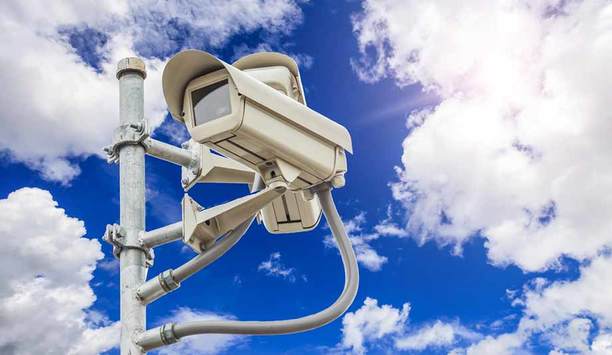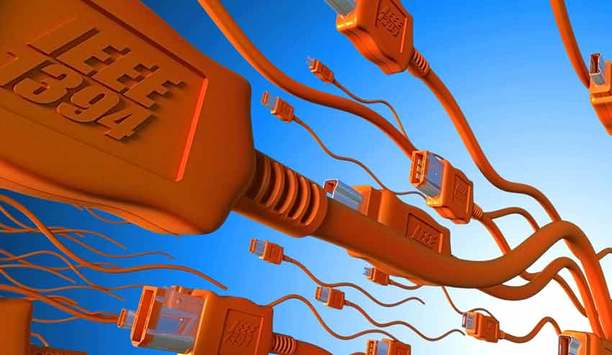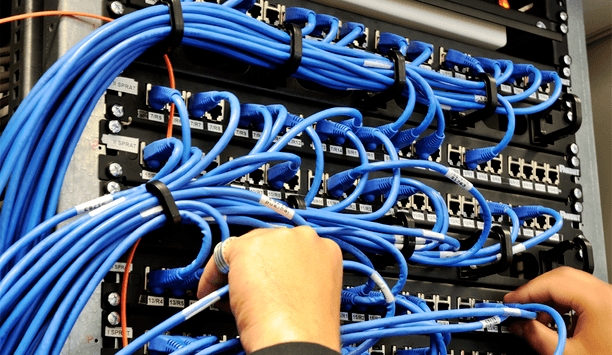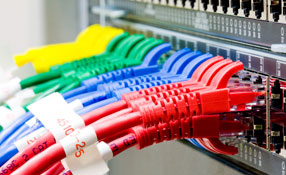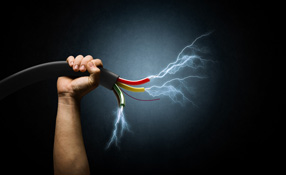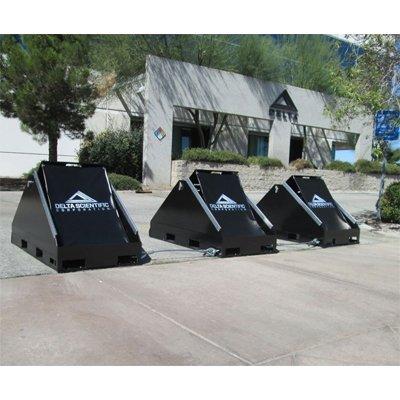 |
| Just because a switch port is capable of handling a certain power level does not mean power is actually available |
Are network switches really designed for IP video security? The simple answer is no.
As video security migrated to IP, a major concern for video security personal was the future of their positions in regard to system specification and control. After all, networks are networks, and they are under the control of IT directors. However, as transition occurred and the demands of IP video security grew, it became apparent that database networks don’t directly translate into IP video applications. One example is the Power over Ethernet (PoE) aspect of network switches.
Too often, a technical call to a camera manufacturer will result from random shutdowns. If the response turns towards the power source, namely the switch’s PoE port, the typical answer is to read the power specifications -- 802.3af (15.4 watts) or 802.3at (30 watts).
This is the first problem, the misinterpretation of the actual port power. Just because a switch port is capable of handling a certain power level does not mean power is actually available. To further confuse matters, most switch specifications only provide an overall power figure. In operation, some power must be allocated to the switch functions with the remaining power divided among the ports.
Next is how the switch allocates this power. In general, it can one of three ways. Activate PoE and the available power is allocated across all ports, or must be programmed to each port. In the first case, it is unlikely that full PoE class power can be achieved at any of the ports. In the second, required power levels can only be achieved until the PoE budget, or available PoE, is exhausted, thus leaving some ports without any power. The third method is often reserved for the most expensive switches and provides at least full 802.3af power to all ports, with the ability to allocate up to 30 watts to some ports. In network PoE switches, the most expensive components are those providing PoE power.
As IP cameras power requirements continue to increase, the ability of network PoE to meet the needs of IP video systems will continue to diminish |
Simply put, there are no standards for the allocation of PoE power. There are other considerations. In most data applications, the surge power required to turn on PoE devices or applications in working PoE devices is limited. This isn’t the case for IP security cameras. Day/night, LED, autoback focus and the PTZ startup all require large power surges. In the case of PTZ, when power is applied, the dome goes to a reference zero position drawing excessive amounts of power. If a system uses several PoE domes, this can actually result in damaging a switch’s power supply.
The following is a specification for a typical Layer 2 network switch. Upon first reading, you might believe that this switch has the ability to provide a full 15.4W (802.3af) to all 24 ports. But, look carefully. Here is the complete switch specification with regards to power.
| Power Over Ethernet | |
| PoE Standard | IEE 802.3af Power over Ethernet/PSE |
| PoE Power Supply Type | End-Span |
| PoE Power Output | Per Port 48v DC, 250mA. Max 15.4 Watts |
| Power Pin Assignment | 1/2 (+), 2/6(-) |
| PoE Power Budget | 380 Watts |
| Max Number of Class 2 PD | 24 |
The wording indicated that all ports are capable of handling 15.4W (PoE Power Output), but does not state that all ports provide 15.4W at the same time.
The PoE Power Budget is 38 Watts, but there is no indication of the power required for overheads.
The most interesting specification is the Maximum Number of Class 2 PD. Class 2 is 6.49W, and the specification clearly states that the maximum number of Class 2 PDs (cameras that can be powered) is 24, but according to the specification only at Class 2.
In general, network switches offer no protection other than main power fusing that will render the switch inoperative. Further, because network PoE switches conform to the safety aspects of 802.3, large surges will shut down PoE to a camera without the ability to restart. In these cases, the switch can be damaged beyond repair or the individual camera taken off line. Either results in lost recording and costly service calls.
As IP cameras power requirements continue to increase, the ability of network PoE to meet the needs of IP video systems will continue to diminish. Too often, a misreading of network switch specifications leads to the selection of switches that will only ensure camera shutdowns or unnecessary returns of properly working cameras to their respective manufacturers. System users may learn only too late that their selected switches, despite their “brand names” or reliable operation in data networks, must be replaced or augmented with separate PoE midspans.
From facial recognition to LiDAR, explore the innovations redefining gaming surveillance




